Shandy Hall Moths
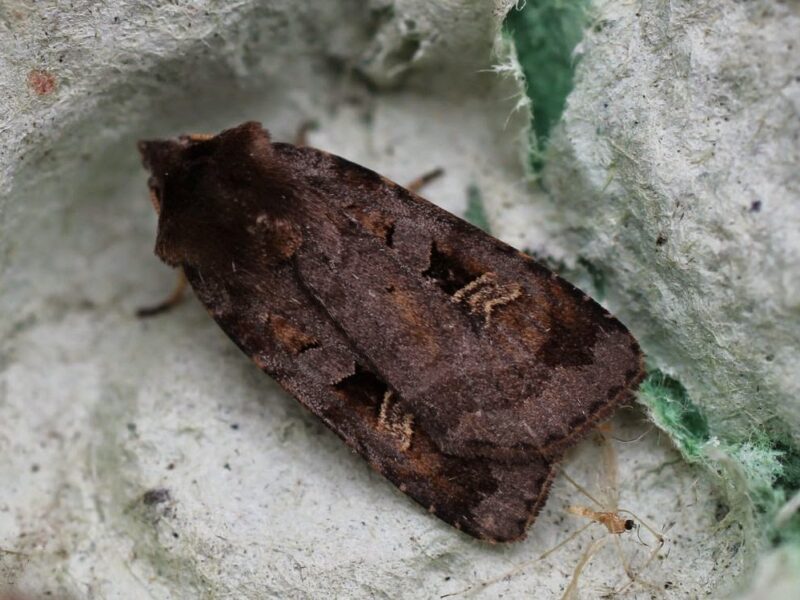
17 June 2014
17 June 2014 – King and Beggar
Purple Clay The new addition to Shandy Hall moths came to us in the most inconspicuous way. A Purple Clay (Diarsia brunnea) was found crouching in the cell of an egg-box this morning. The second part of its scientific name brunnea (brown, earth-colored) correlates to ‘clay’. As its name suggests the moth is rather unassuming […]
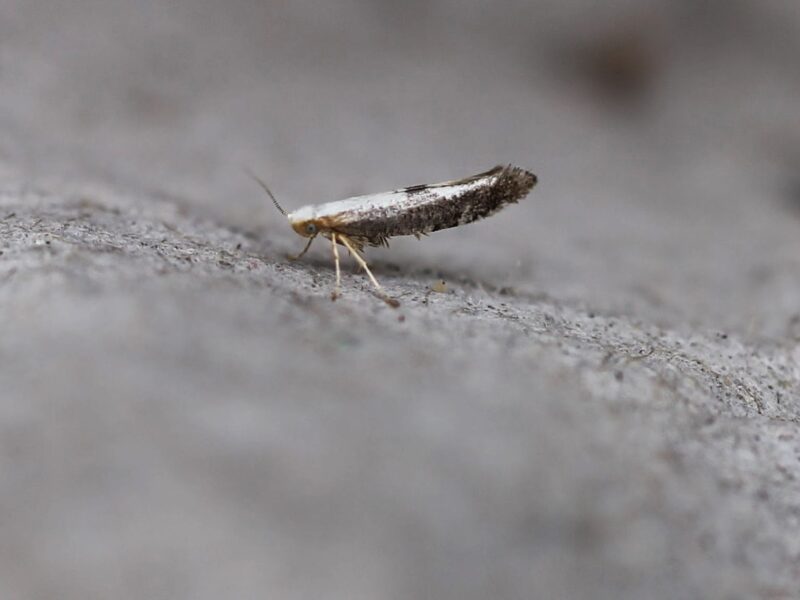
16 June 2014
16 June 2014 – Blowing in the Wind
Apple Fruit Moth (Argyresthia conjugella) Yesterday the trap was filled with some giants of the moth world – we recorded three different species of hawk-moth in the one catch – Small Elephant, Eyed and Poplar. They were, however, not new to the garden. Ironically, the subject of my first blog post at Shandy Hall will […]
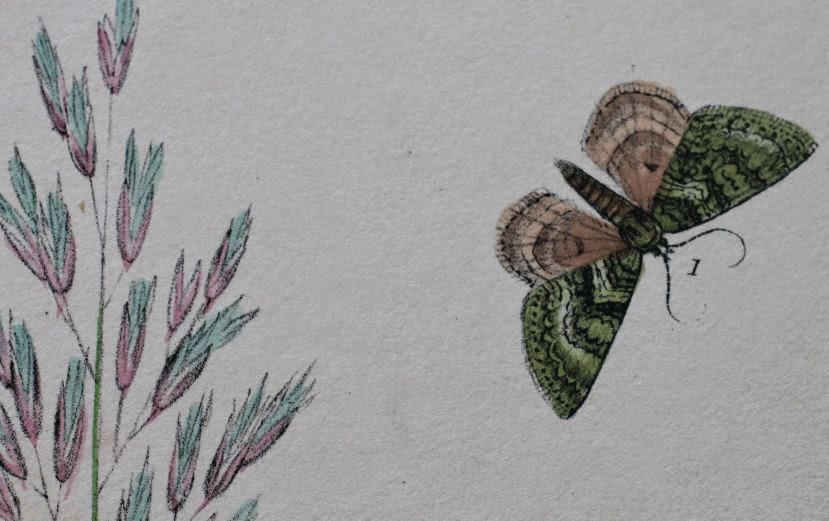
13 June 2014
13 June 2014 – Time is Out of Joint
Autumn Green Carpet (Chloroclysta miata) One day last Autumn I checked the Yorkshire Moths Flying Tonight website and found there were four moths that were common enough in the county to stand a fair chance of turning up in the gardens in Coxwold. One was the Juniper Carpet (which duly arrived) and the other was […]
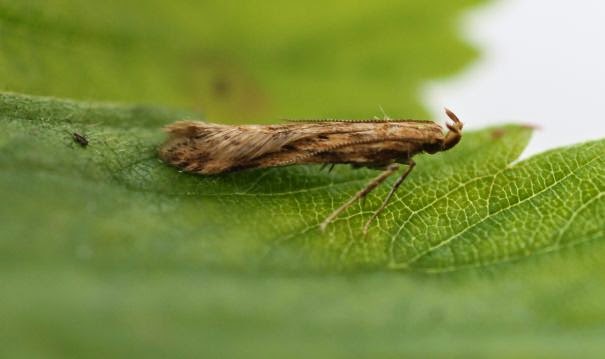
12 June 2014
12 June 2014 – Meadow Neb
(Metzneria metzneriella) This moth was a puzzle. Fortunately Charlie Fletcher recognized it as Metzneria metzneriella for, had he not done so, we would still be trying to discover its identity. It is more easily identifiable from above when the spots on the fore-wings are more apparent. It is named after Herr Metzner – a civil […]
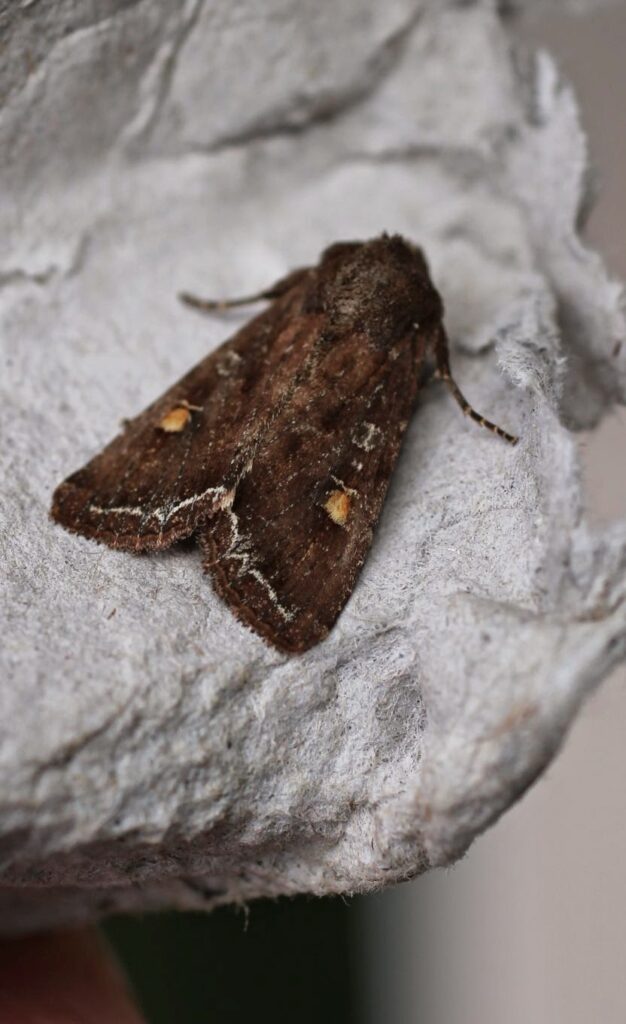
11 June 2014
11 June 2014 – Typo
Bright-line Brown-eye (Lacanobia oleracea) The moth that lives on vegetables (lakhana meaning ‘greens’) consumes the roots of vegetables (oleraceus). This moth was named with a typo – lacanobia should read as lachanobia but it was never corrected. The fact that its common name, Bright-line Brown-eye should be similar to Brown-line Bright-eye (Mythimna conigera) just adds to […]
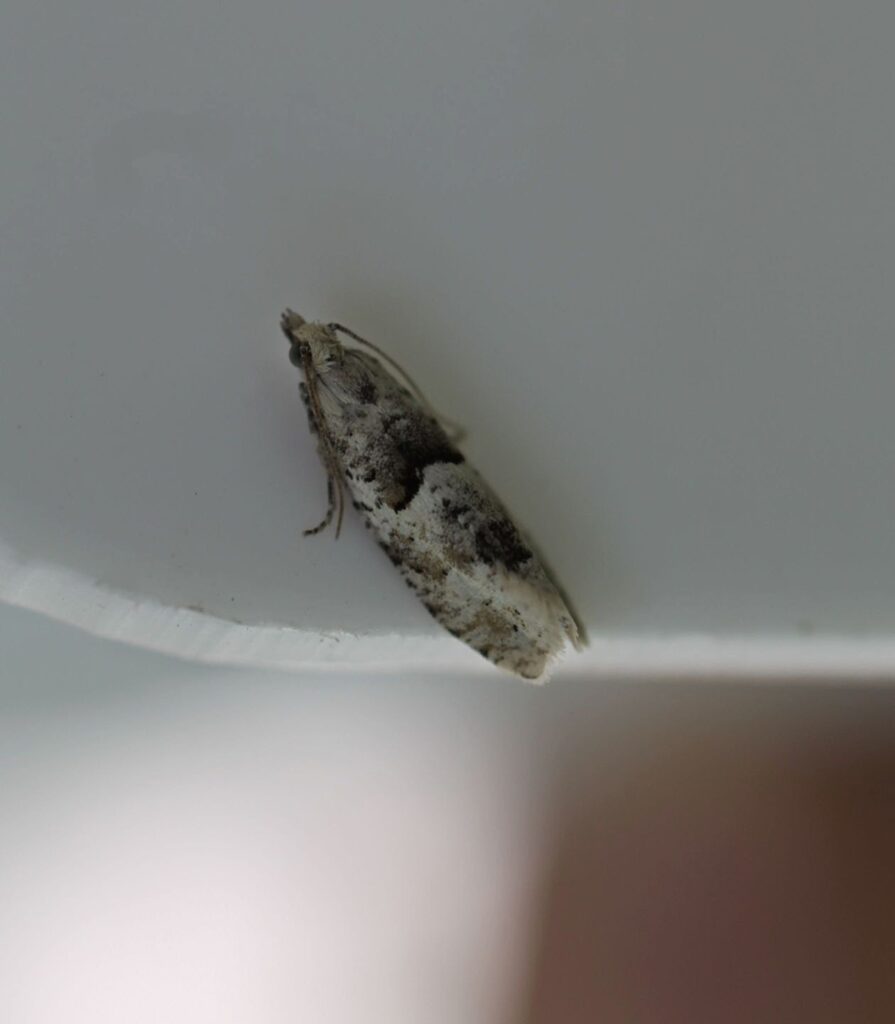
7 June 2014
6 June 2014 – Two Constant Moons
(Epinotia bilunana) The rather sterile condition represented in this image is because this micro-moth chose the supports for the rain-shield to rest upon. The Latin name epinotia comes from the Greek for ‘upon the back’ and bilunana ‘two crescent moons’ – which aren’t immediately apparent. On the excellent Norfolk and Sussex moth sites, the […]
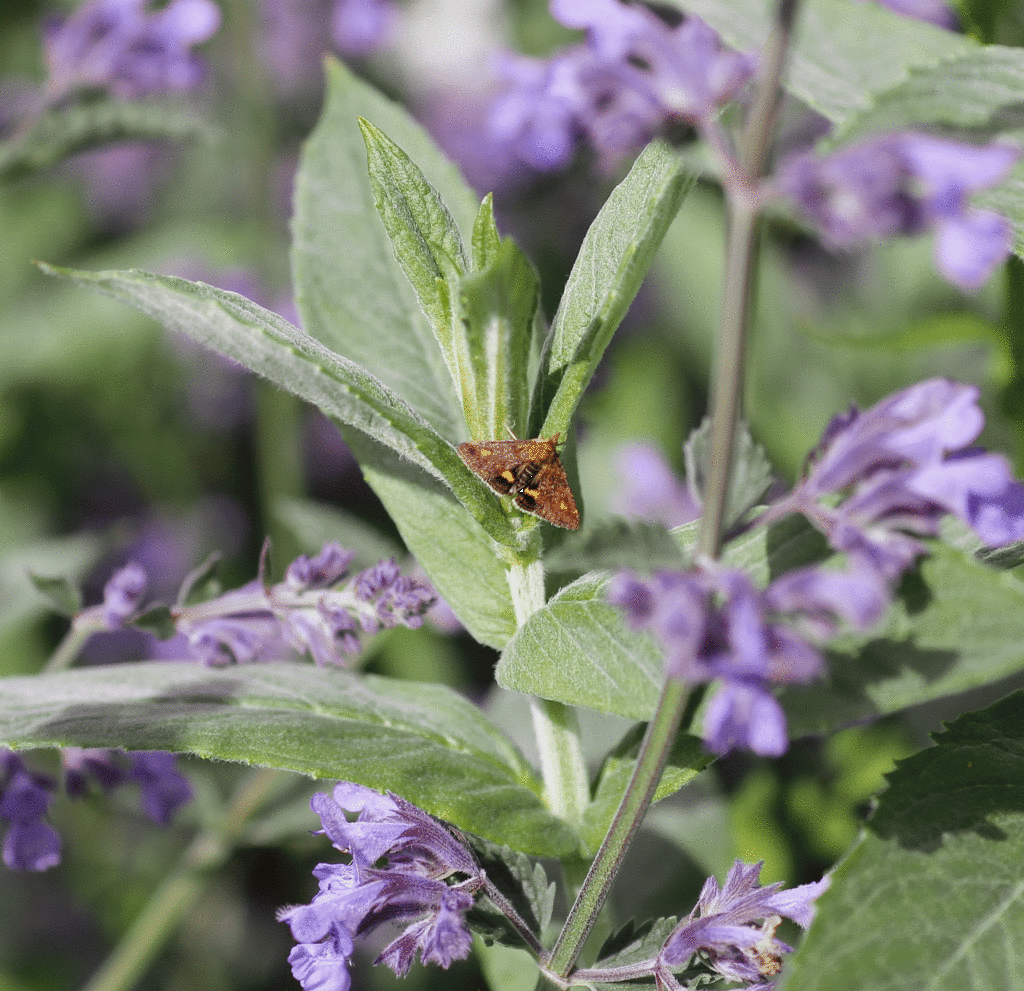
3 June 2014
3 June 2014 – Pliny, Aeschylus and Woolf
Mint Moth (Pyrausta aurata) ‘Moths that fly by day are not properly to be called moths; they do not excite that pleasant sense of dark autumn nights and ivy-blossom which the commonest yellow-underwing asleep in the shadow of the curtain never fails to rouse in us.’ That’s Virginia Woolf’s opinion. This afternoon the sun came […]
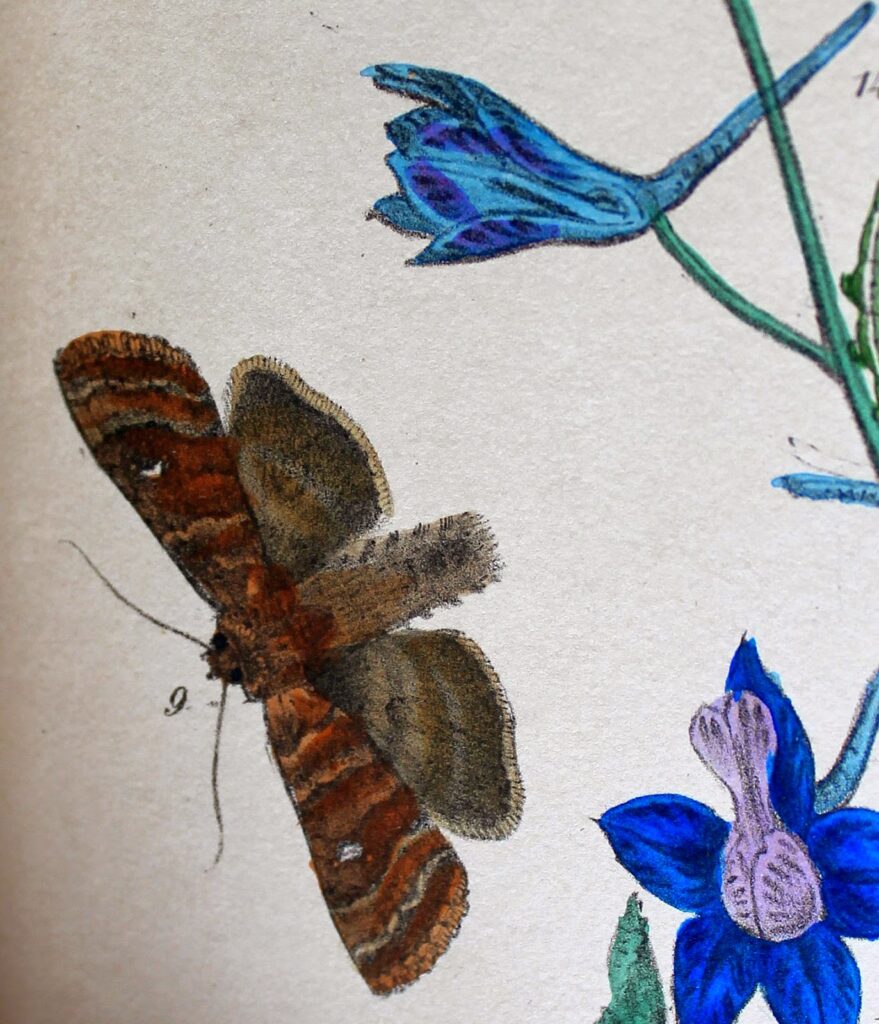
2 June 2014
2 June 2014 – Satellites in York and Coxwold
The Satellite (Eupsilia transversa) The Satellite (above) is illustrated as if in flight next to flowers of the Field Larkspur (Delphinium consolida), or Knight’s Spur as it is also known. The moth has been recorded at Shandy Hall before (26 March 2012) and has appeared quite often since then. Yesterday I noticed what looked like a […]
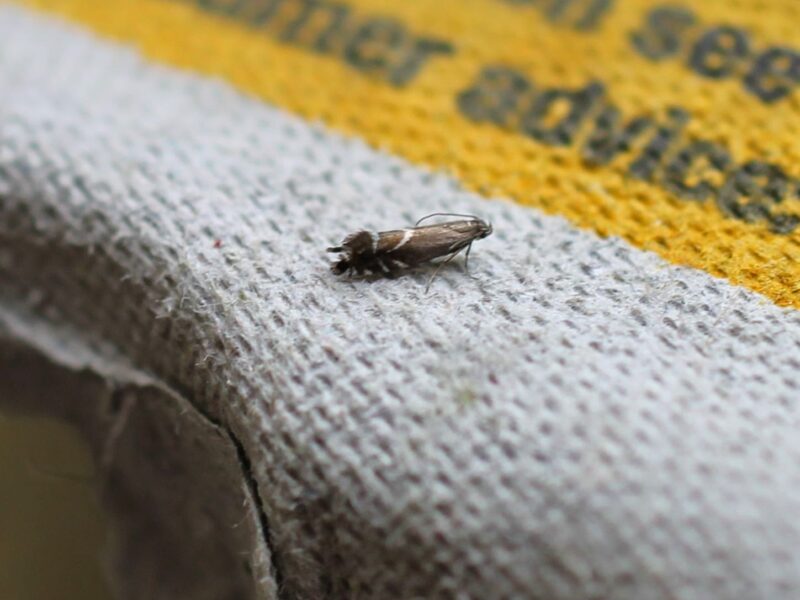
29 May 2014
28 May 2014 – Cocksfoot Moth
Cocksfoot Moth (Glyphipterix simpliciella) Identifying micro-moths is not easy. This moth is visible but is very small and without a macro lens on the camera it would be difficult to see the markings in a photograph. Consulting the excellent Guide to Micro-moths doesn’t guarantee success either. To the untrained eye this particular specimen could be […]

26 May 2014
26 May 2014 – From Fairies to Giants
(Micropterix calthella) Not fly-by-nights so these delicate little moths were not trapped by the lure of the mercury vapour lamp, but it was the pollen of the daytime buttercup that attracted them. There is a splash of purple at the base of the fore-wing so I am reasonably sure they must be Micropterix calthella {‘little […]
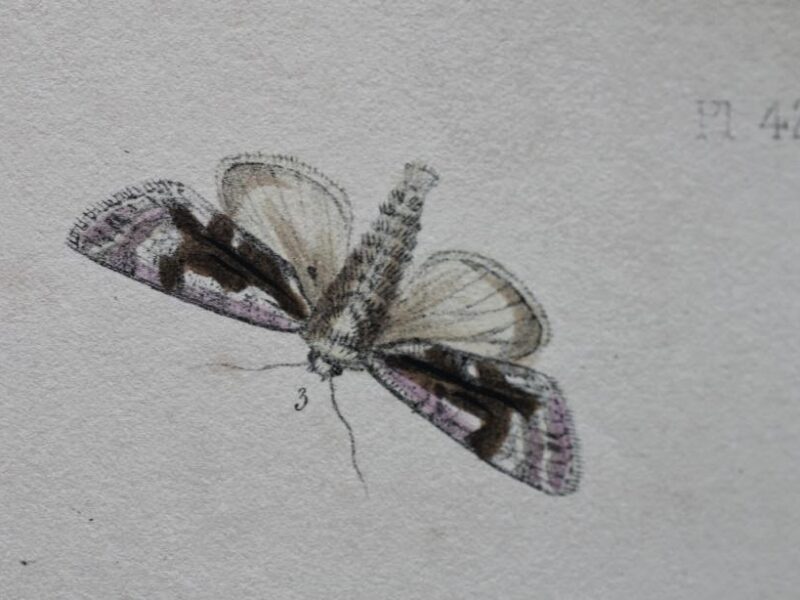
22 May 2014
22 May 2014 – Nightfall
Alder Moth (Acronicta alni) Nightfall. A gentle shift from light to dark. The Alder Moth (Acronicta alni) is not a moth that flies at dusk but the Latin name implies that it might – acronicta means nightfall. Each moth species seen for the first time (this is number 334 for Shandy Hall) emphasises the extraordinary beauty […]
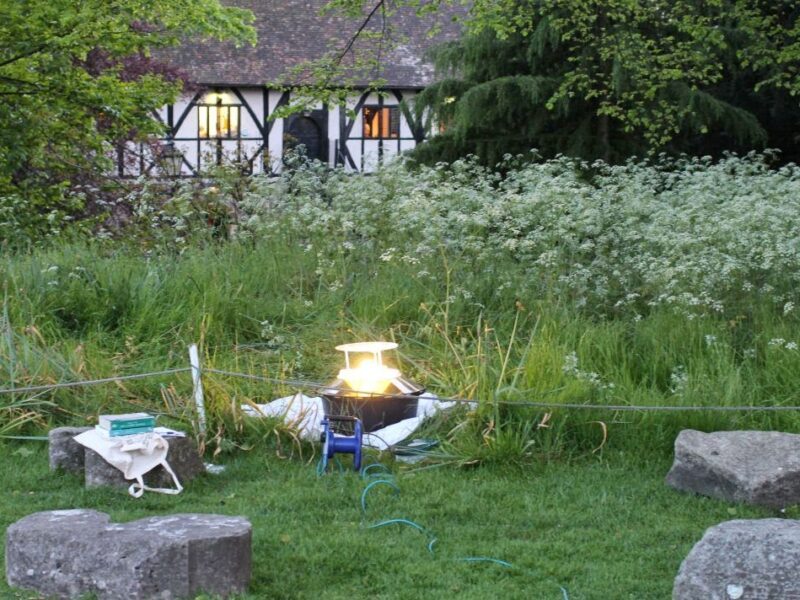
20 May 2014
17 May 2014 – On the Road
Moth-trapping in the York Museum Trust gardens, York Trapping in the gardens of the York Museums Trust should be an interesting addition to this year’s activities. Running traps both there and at Shandy Hall will allow comparisons to be made between numbers and varieties of species caught. Another garden, close-by in Marygate, will, on occasions, […]
Recent Moths
- Rise of the AI Naturalist
- Best Moths for a Haunted Abbey
- The Real and Fake Deaths of Moths
- The Colonizers of Yorkshire
- Glamour in the Dark: Two Newcomers Arrive at Shandy Hall
- 25 July 2023 – Collective Noun for Hawkmoths
- MOTH LIST to August 2023 with links
- 28 July 2023 – TRIPLE New Species Alert!
- 18 July 2023 – A Golden…Plusia!
- 13 July 2023 – Arts and Sciences
- 10 July 2023 – Rise of the Yellow Underwings
- 4 July 2023 – Cold-weather Catch






